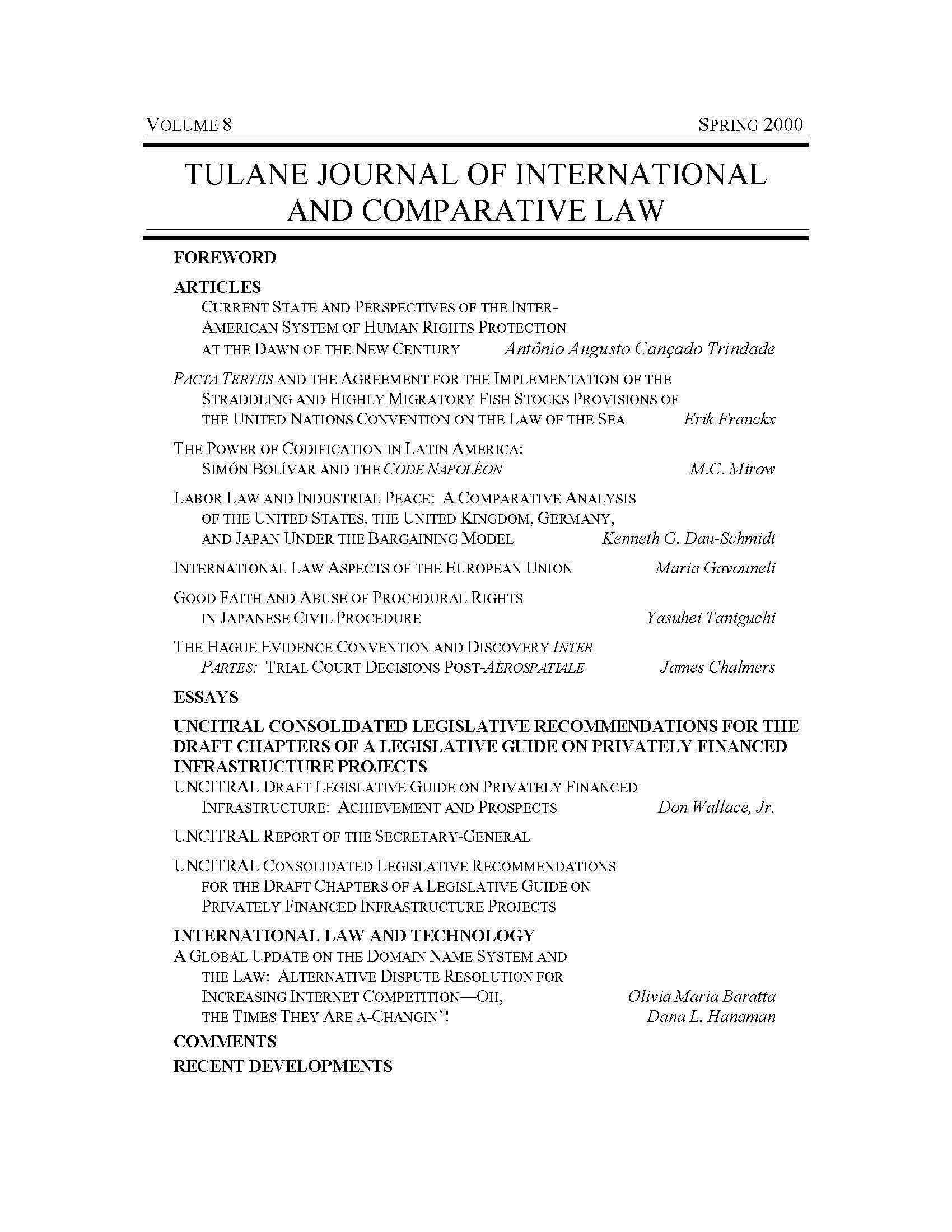Current State and Perspectives of the Inter-American System of Human Rights Protection at the Dawn of the New Century
Abstract
An assessment of the inter-American system of protection of human rights at the dawn of the new century may distinguish five stages of evolution: that of the antecedents of the system; that of the formation of the system (characterized by the solitary and central role of the Inter-American Commission on Human Rights and the progressive expansion of its powers); that of the conventional institutionalization of the system (as from the entry into force, in mid-1978, of the American Convention on Human Rights of 1969); that of the consolidation of the system (marked by the jurisprudential construction of the Inter-American Court of Human Rights, and by the adoption of the two additional Protocols to the American Conventions); and, at last, that of the necessary improvement of the system. The following recommendations are submitted to this effect de lege ferenda, to secure an improved functioning of the mechanism of protection of the American Convention in all stages of the procedure.
The decisions of the Commission on admissibility ought to be pronounced in limine litis, and not reopened before the Court. The files of the cases lodged by the Commission with the Court ought to be carefully prepared, in a way that the Court does not need to reopen the fact-finding already undertaken by the Commission. Moreover, the Commission ought to conceive clear criteria for the renvoi of cases to the Court. The alleged victims (or their legal representatives) should have locus standi in judicio before the Court, as one cannot conceive rights without the legal capacity to vindicate them. Such locus standi is a guarantee of the equality of arms (égalité des armes) and of the due process of law, which allows a better balance between the parties, the exercise of the freedom of expression as well as a better instruction of the cases, the transparency of the process to the benefit of all concerned, and it puts an end to the ambiguity of the current role of the Commission. Such a recognition of the jus standi of the individuals ought to contribute to the necessary “jursidictionalization” of the procedure under the American Convention, besides crystallizing the international legal personality and capacity of individuals in the ambit of contemporary International Law of Human rights on the American continent.
Une évaluation du système inter-américain de protection des droits de l’homme à l’aube du nouveau siècle peut distinguer cinq étapes d’évolution: celle des antécédents du système; celle de la formation du système (caractérisée par le rôle solitaire et central de la Commission interaméricaine des Droits de l’Homme et l’expansion progressive de ses pouvoirs); celle de l’institutionnalisation conventionnelle du système (à partir de l’entrée en vigueur, au milieu de 1978, de la Convention américaine des Droits de l’Homme de 1969); celle de la consolidation du système (marquée par la construction jurisprudentielle de la Cour interaméricaine des Droits de l’Homme, et par l’adoption des deux Protocolesadditionnels à la Convention américaine jusqu’ici, ainsi que des Conventions interaméricaines sectorielles); et, enfin, celle de l’amélioration nécessaire du système. Les recommandations suivantes sont présentées de lege ferenda à cet effet, pour assurer un fonctionnement amélioré du mécanisme de protection de la Convention Américaine à l’ensemble des étapes de la procédure.
Les décisions de la Commission sur l’admissibilité devraient être prises in limine litis, et non rouvertes devant la Cour. Les dossiers des affaires soumis par la Commission à la Cour devaient être préparés avec grand soin, de façon à ce que la Cour n’ait pas besoin de rouvrir la détermination des faits (fact-finding) déjà entreprise par la Commission. En plus, la Commission devrait concevoir des critères clairs pour le renvoi des affaires à la Cour. Les prétendues victimes (ou leurs représentants légaux) devraient avoir locus standi in judicio devant la Cour, puisqu’on ne peut concevoir de droits sans la capacité juridique de les revendiquer. Un tel locus standi est une garantie de l’égalité des armes (equality of arms) et d’un procès juste et équitable (due process of law), qui permet un meilleur équilibre entre les parties, l’exercice de la liberté d’expression ainsi qu’une meilleure instruction des affaires, la transparence du procès pour le bénéfice de tous ceux qu’il concerne, et met fin à l’ambiguité du rôle actuel de la Commission. Une telle reconnaissance du jus standi des individus devrait contribuer à la “juridictionnalisation” nécessaire de la procédure d’après la Convention américaine, tout en cristallisant la personnalité et la capacité juridiques internationales des individus dans le cadre du droit international des Droits de l’Homme contemporain dans le continent américain.
